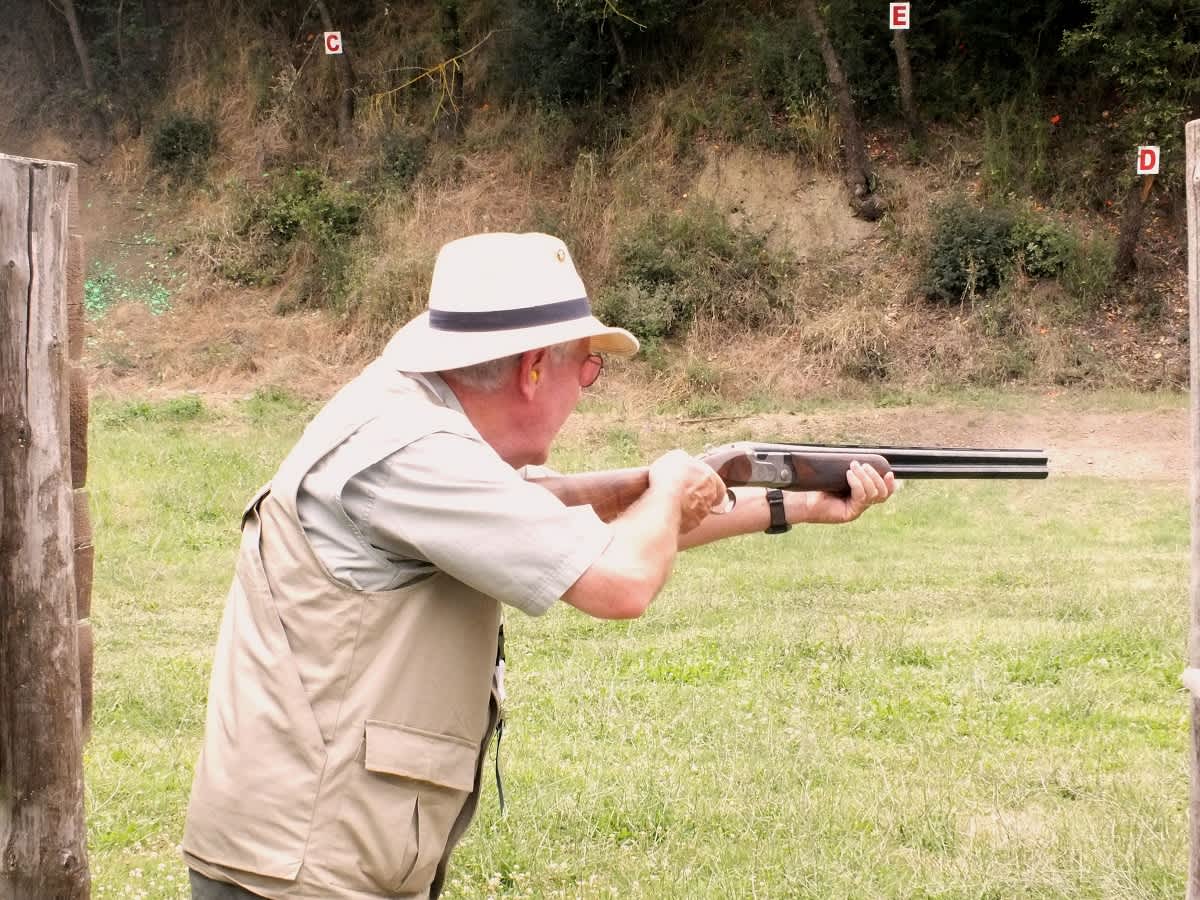Beretta’s New 690 Field III: First Shooting Impressions
Lewis Creek Shooting School 07.10.14

The over-under shotgun is arguably the most effective gun for wing and clay shooting. As a confirmed side-by-side man, I truly love the older style of double gun, but reality is reality and the advantages of the over-under simply outweigh the beauty and grace of a side-by-side. First, the lower barrel is located much more in line with the axis of recoil than with any other action type (with the exception of some specialty guns designed for competition). The low first barrel gives the shooter less muzzle rise and allows quicker acquisition of the next shot. Second, the stacked barrels afford the shooter a much less restricted view of the target than a side-by-side. One of the most common wingshooting targets, both in hunting and competition, is a rising, quartering bird. With a side-by-side, the barrels of the gun must obscure the target for the shooter to hit it.
It could be argued that the semiautomatic has now eclipsed the over-under, but most high-level wingshooting competitions still see over-under guns winning the laurels. Semiautos admittedly do a better job of spreading the recoil out over a longer time, thus making them more comfortable to shoot, but they have never managed to acquire the graceful feel and balance of the over-under.
Of course, with shotguns, a great part of the attraction is simply in the proper implementation of the gunmaker’s art, and few guns offer a better canvas for this than the over-under. Beretta has been making beautiful and functional shotguns for many years and their over-unders are the guns they are best known for.
The 686/687 line has probably been the storied manufacturer’s best seller and while it’s still in the line, it appears that its replacement is here. The 690 Field III was introduced to the world this week in Berardenga, Italy. About 40 gun writers from all over the world convened on Castel Monastero, a 1,000-year-old monastery in Tuscany. The official break-out day was on July 7. Of course, the proof of a shotgun is in the shooting, and Beretta had a competition event planned for the writers. The event was composed of six-man teams consisting of writers and editors from two countries in each team. There were six teams and once the winning team was established, its members would compete in a shoot-off to determine the ultimate champion.
My team consisted of shooters from the United States and Ukraine, with Bruce Buck, John Thames, John Ryan, and myself representing the homeland. We managed a respectable second place as a team, with the British and Italian team beating us out by nine targets. In the shoot-off, Michael Yardley distinguished himself by shooting 24 of 25 targets for the win. Joe Dimbleby took second, and Alistair Balmain third—completing the United Kingdom’s sweep of the individual event.
As for shooting the 690 Field III, it was exactly what I would have expected from Beretta: a high-quality, lively feeling, and reliable shotgun. I’ve owned two 686s, an Onyx and Silver Perdiz. While a direct comparison wasn’t available, my impression was that the 690 is probably a more lively-handling gun. The new forearm metal is aluminum, making the gun lighter. The 690 is available in two stock comb and heel configurations, one higher and one lower. Both versions were available for our testing. I found the lower of the two to be slightly lower than the comb height of my older 686 guns. The 690 is also available in cast-off and cast-on versions, making it easier for left-handed shooters to get a great fit from a factory gun. I really liked the idea of the Eco Ejectors, because I’d normally rather pull and drop my hulls, rather than have them kicked out on the ground.
The triggers were crisp and clean, recoil was easily manageable, and the gun swung well. It was fast enough for a field gun, yet with enough muzzle weight to keep it moving on crossing shots. In the appearance department, the 690 Field III is certainly a beautiful gun. The receiver is as thin as we’ve grown to expect and graced with double fences that, combined with the engraving and the coin finish, set off the premium walnut wood. At 7.3 pounds, the 690 Field III is light without being whippy. It’s available in three barrel lengths: 26, 28, and 30 inches, and comes with five Beretta screw-in chokes.
Expect a full field test of the 690 Field III in the near future.

